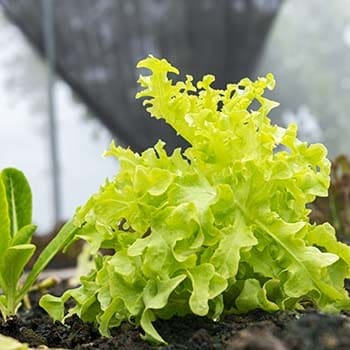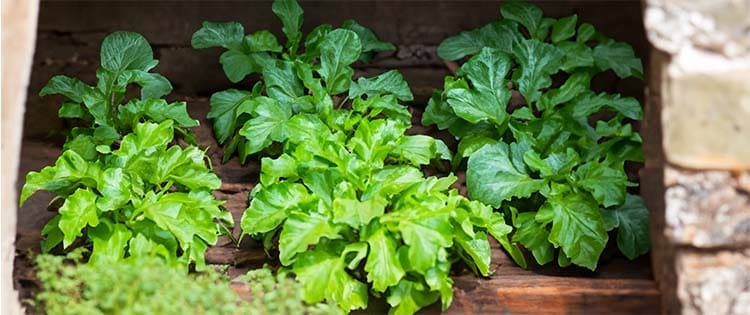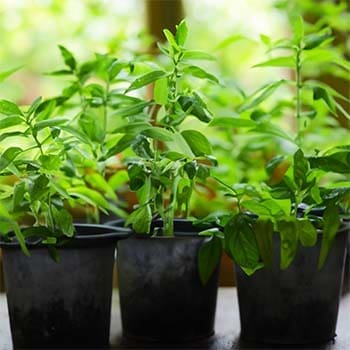Today, we’re going somewhere we’ve never gone before. Upstairs.
Into the attic.
Attics are one of the least-used parts of the house these days, often being a huge pain to get up to and poorly reinforced. However, since they are so rarely used, we may as well do something worthwhile with them. Let’s see what we can grow up there!
Salads and Salad Green Accessories
My first pick for any indoor growing venture is going to be greens for salads, microgreens, sprouts, and that general variety of vegetation that grows well in almost any level of light and is perfectly happy to settle shallow roots in a small tray. The last thing that you want to do is to put large potters and grow lights up in this area of your house.
Why? These areas are often a bastion of hiding and comfort for rodents and other invading animals. Humans are rarely in them and they aren’t heavily monitored because of this. Due to that simple fact, there is a good chance that hot lamps could get knocked over or their wires chewed, leading to serious issues including house damage or full loss in a fire.
As always, the last thing that we want on this blog is for you to put your family at risk. If using grow lamps, be extremely careful. However, salad greens shouldn’t need them so long as there is a verifiable source of light that does offer UV at some point during the day. 1-3 hours is plenty for almost all species of small salad greens.
Miniature Vegetables
While most vegetables grow on enormous vines or bushes that can range from several-quart-sized to as big as a person, there are around a dozen miniature vegetables that I think of which may give you an option to raise in your attic.
Most of these tiny vegetables are going to be things like miniature broccolini and miniature carrots (not, in fact, baby carrots). Though some of these may need substantial light, if you live in an area above the 6a/b zone, you may be able to move them in their plots outside during the day and back up to the attic for the evenings.
However, if you can’t do this, try to start them a little earlier than frostbite season. If the plants are given time to mature a little bit outside and given help pollinating by you or worker insects, you should be good to go. If you absolutely must start them in the dead of winter, try to give them some time with a grow light if it is safe in your location to do so.
Shade-Friendly Herbs
Sometimes, the old standby of herbs is your best bet when dealing with a complicated gardening situation. They love to bloom during the spring, they love to bloom during the winter, and most of these herbs are ready-pick and toss in your dinner to be used on a daily basis… after they get to growing very well and can spare some leaves for your soup or side dishes.
Not only are herbs incredibly hardy against cold (if whatever heating method you have does not work upstairs since many attics are not ducted into the system), but dozens of herbs are very, very into living in a shady area. While this doesn’t mean that these plants can go without sun, a solid fertilizing plan and shady growing-type attic conditions are more than enough to allow these plants to thrive.
Some of the herbs you may want to consider are cilantro, almost all varieties of mint (which can be a wonderful addition to your home during the holidays!), several varieties of dill, and tarragon; which gives you a certain tang that you’ll remember from Thanksgiving dinners as a child though the herb no longer has the popularity that it once did. Why not start using it again? Most people love it once reintroduced to it.
Tiny Plots
Again, I’m not suggesting that you go all out and try to start loading down your ceiling with a lot of heavyweights. You’re going to have a ton of problems if that’s what you decide to do. The less weight up there, the better. The more spread out, the better. If you want to garden heavily, you’re better off doing it in a garage vs an attic simply to protect your ceiling from water damage or weight damage.
On the other hand, a small box the size of a cat litter box (give or take a few inches) is a perfect tiny plot for some last-minute crops with shallow roots and low light requirements. It works; better yet, it works well and gives your plants plenty of room to grow and flourish.
Related: Dwarf Fruit Trees You Can Grow In A Tiny Space
The biggest problem with this is that you’re going to have to account for the weight of the containers, soil, plants, and water all at once. That might mean that you have some serious math on your hands. Don’t have time for that? I strongly suggest laying boards across the area where you want to place your very, very tiny gardening boxes. Use the weight of the struts in your ceiling as opposed to the drywall. This still won’t hold up forever, but it’ll do better than just plain drywall will.
Have you gardened in your attic? Or are you considering it? What do your upstairs gardening plans look like and why? Was there anything important that you think I missed? I’d love to hear about it in the comments down below and, as always, remember! Happy Gardening!
Veggies You Only Plant Once And Harvest Forever
The Only Food That Grows Almost Faster Than You Can Eat It (Video)
How To Grow An Endless Supply Of Potatoes
15 Things You Should Teach Your Children That Can Save Their Lives












This is great knowledge it helps if you are a survivalist and are self sufficient excellent work on the preparer of this information